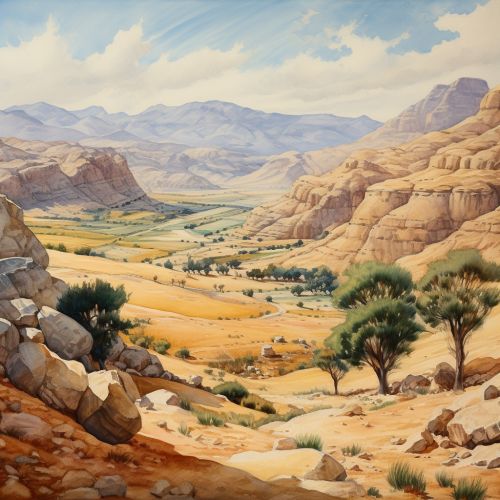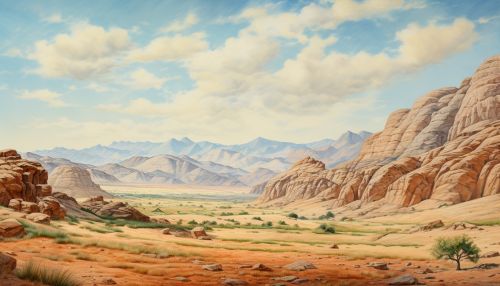Jordan
Geography
Jordan, officially known as the Hashemite Kingdom of Jordan, is a country located in the Middle East. It is bordered by Saudi Arabia to the south and east, Iraq to the north-east, Syria to the north, and Israel and Palestine to the west. The country has a small coastline at the Red Sea in its extreme south-west, but is otherwise landlocked.


The country's terrain varies significantly, ranging from the highlands in the west, the Great Rift Valley, and the desert plateau in the east. The highest point in the country is Jabal Umm ad Dami at 1,854 meters above sea level, while the lowest point is the Dead Sea, which is more than 400 meters below sea level.
History
The history of Jordan can be traced back to the Paleolithic period, with archaeological evidence suggesting that the area was inhabited by hominids as early as 250,000 years ago. The region was later home to ancient civilizations including the Canaanites, Ammonites, Moabites, and Edomites.
During the Iron Age, the region was part of the kingdoms of Ammon, Moab, and Edom, which were mentioned in ancient biblical texts. These kingdoms were later conquered by the Assyrian Empire, followed by the Babylonian Empire and the Persian Empire.
In the classical era, the region was part of the larger Hellenistic Seleucid Empire, before becoming a part of the Roman Empire. The city of Petra, which was the capital of the Nabatean kingdom, flourished during this time.
In the 7th century, the region was conquered by the Islamic Caliphate, and it remained under Muslim rule for several centuries. The modern state of Jordan was established in the early 20th century after the fall of the Ottoman Empire. It became an independent kingdom in 1946.
Politics and Government
Jordan is a constitutional monarchy based on the constitution that was adopted in 1952. The monarch is the head of state, commander-in-chief of the army, and symbol of unity and sovereignty. The current monarch, King Abdullah II, ascended to the throne in 1999 following the death of his father, King Hussein.
The government is divided into three branches: the executive, legislative, and judicial. The executive branch is headed by the king, who appoints the prime minister, the cabinet, and the regional governors. The legislative branch consists of the bicameral National Assembly, which includes the Senate and the House of Representatives. The judicial branch is independent and includes the Supreme Court, courts of appeal, and magistrate courts.
Economy
Jordan's economy is among the smallest in the Middle East, and the country has few natural resources. However, the economy has grown steadily over the years, thanks to economic reforms and foreign investment. The main sectors of the economy are services, industry, and agriculture.
Tourism is a significant part of Jordan's economy, with millions of people visiting the country each year. The most popular tourist destinations are the ancient city of Petra, the Wadi Rum desert, and the Dead Sea.
Culture
Jordanian culture is a blend of traditional Arab culture and western influences. The country's rich history and diverse ethnic makeup have contributed to a vibrant and diverse cultural scene. Traditional music, dance, and cuisine are an integral part of Jordanian culture.
The official language is Arabic, but English is widely spoken and understood. The majority of Jordanians are Sunni Muslims, but there is a significant Christian minority.
